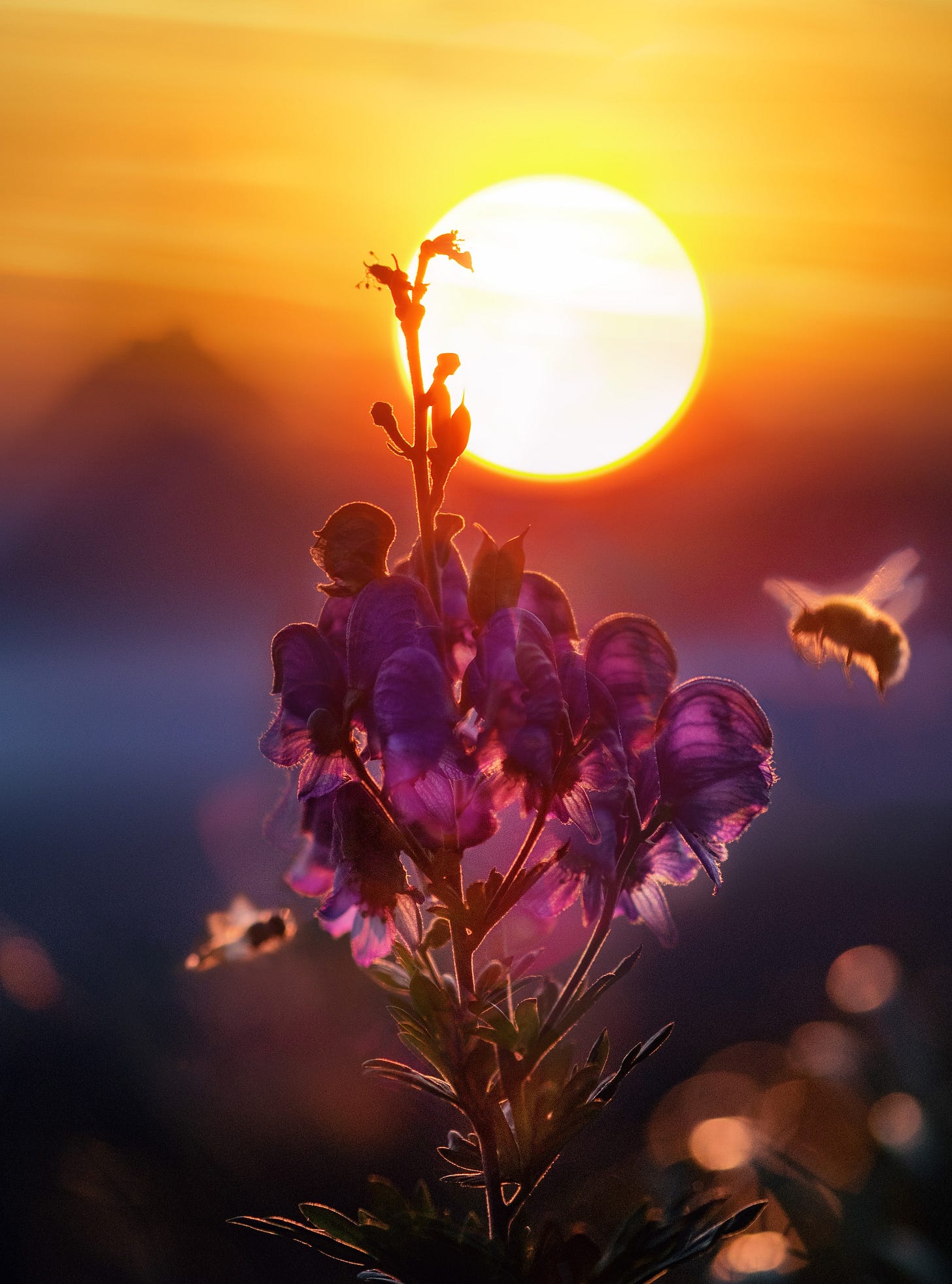
Rain Dance
Share
I love the sun. I mean, I really love it.
During the winter months I often fantasise about the long, warm evenings spent in summer clothes. I always find it hard to say goodbye, as the wheel of the year turns her face towards the Yule.
Remember 2024, when it rained and rained all Summer long? I’ve found myself wishing for a little bit of that rain, recently. The ground needs it. The bees need it.
Drought doesn’t arrive with the drama of a wildfire or the violence of a storm. It creeps in slowly, draining moisture from soil, wilting plants, and turning vibrant ecosystems into brittle landscapes. For honeybees, whose survival depends on a delicate balance of floral abundance, hydration, and hive stability, prolonged drought is a multi-pronged threat.
Drought, once an occasional hardship, is becoming a seasonal certainty. And for native insect populations—especially honeybees—the consequences are profound.
At the heart of honey production is nectar—a sugary liquid secreted by flowering plants. Bees collect nectar, convert it into honey, and store it as food for the colony. But nectar is a luxury that plants produce only when conditions are right. During drought, plants prioritize survival over reproduction. They conserve water, reduce flowering, and in many cases, stop producing nectar altogether.
A 2023 study published in Ecological Entomology found that drought-stressed plants produced up to 60% less nectar, with significantly lower sugar concentrations. For bees, this means more effort for less reward. They must travel farther, forage longer, and compete more aggressively for dwindling resources. The energy cost is high—and the return is low.
While nectar is their primary fuel, bees also need water to live. They use it to cool the hive, dilute honey to eat, and keep the humidity in the hive as it should be (nobody likes dried-out larvae…) In drought conditions, natural water sources—like puddles, streams, and dew—dry up. Bees are forced to search farther afield, increasing their exposure to predators, pesticides, and exhaustion.
In extreme cases, colonies may abandon their hives in search of better conditions—a phenomenon known as absconding. This behaviour, more common in arid regions, can lead to colony collapse if bees fail to find suitable habitat.
A Fragile Balance
Honeybees are resilient, but they’re not invincible. Drought tests the limits of their adaptability, pushing colonies to the edge of survival. As climate change intensifies, droughts will become more frequent and severe. Understanding how these dry spells affect bees—and taking steps to protect them—is not just about preserving honey. It’s about safeguarding the intricate web of life that depends on pollination.
The effects of drought on honey production are not just anecdotal—they’re quantifiable. Beekeepers across Europe, North America, and Australia have reported significant drops in honey yield during drought years. A 2024 report from the European Commission noted that honey output in southern Spain fell by 40% during a prolonged drought, citing reduced floral availability and increased hive stress.
Lower honey yields aren’t just an economic concern—they’re a signal of ecological imbalance. Bees are bioindicators: their health reflects the health of the environment. When they struggle, it’s often because the landscape itself is under strain.
While honeybees are the poster children of pollination, they’re not alone. Native solitary bees, hoverflies, butterflies, and beetles also suffer during drought. Many of these species have shorter lifespans and narrower foraging ranges, making them even more vulnerable to habitat degradation.
Drought reduces the diversity and abundance of flowering plants, which in turn reduces the diversity of pollinators. This feedback loop can lead to long-term declines in insect populations, with cascading effects on plant reproduction, food webs, and biodiversity.
So here’s hoping that next year brings more rain to my region. Not just for the gardens and the crops, but for the bees—for the nectar they need, the water they seek, and the balance they help maintain. A little more rain could mean a lot more life. And maybe, just maybe, a louder hum in the summer air.


